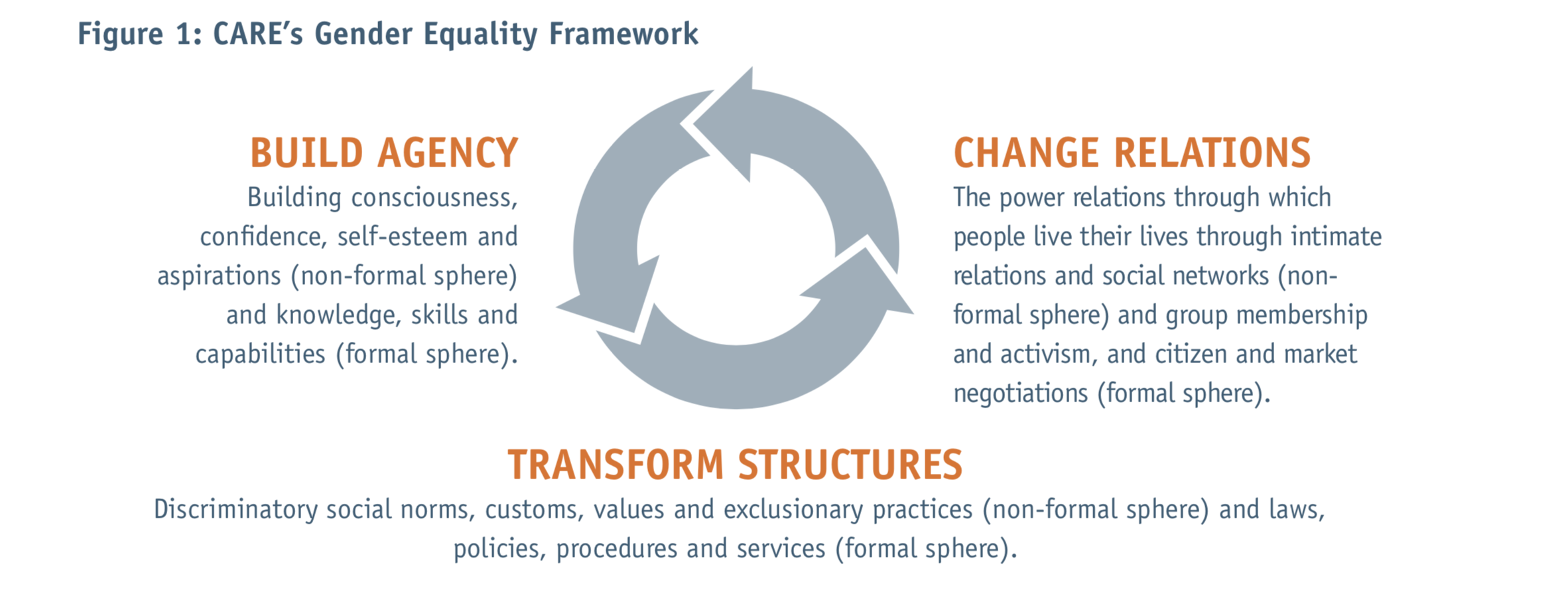Discussing Power and Women's Empowerment
Objective: To understand various types of power and how participants perceive power – its sources, types and influence/impact on society.
Materials/Preparation: Illustrations of different situations depicting various types of power.
Participants: This exercise has been done with CARE staff and partners.
Steps
To small groups, the facilitator distributes a set of illustrations that depict power. The task for each group is to identify and describe the kind of power they see in each of the drawings (i.e. political power, money as power, social movements, military force, education/knowledge, official authority, threat of violence, etc.).
The teams then brainstorm:
- Who do you perceive as powerful people within their own society?
- When you look at the different types of power, where do women have power?
- To what extent are development workers exploiting the capacities of women to help in development work?
- From where do women get their power?
In smaller groups, the participants then discuss:
Group 1 |
Group 2 |
Group 3 |
Group 4 |
|
|
|
What types of tools/ways have organizations in your community used to measure women’s empowerment? |
Based on the discussion, the facilitator then presents CARE's Gender Equality Framework to discuss the inter-connected aspects of social change. CARE's Gender Equality Framework (GEF) was developed to assist CARE staff in conceptualizing and planning gender equality work. The GEF builds on existing CARE frameworks and tools, in particular the Women's Empowerment Framework. The GEF updates CARE's previous Women's Empowerment Framework to capture learning that our women and girls' empowerment approaches must be synchronised with and complementary to how we engage men and boys and people of all/diverse genders for gender equality.

This visual highlights how dynamics in agency, structural and relational dynamics interact to create (or undermine) the empowerment process, and the importance of seeking an understanding of how our work affects change in all three dimensions for lasting impact on women’s empowerment and gender equality.
Related Tools
View more tools related to:
Resources
- CARE (2009). Women’s Empowerment SII Framework. Women’s Empowerment Strategic Impact Inquiry, CARE.
- CARE Uganda (2005). Participatory Workshop on Women’s Empowerment.
